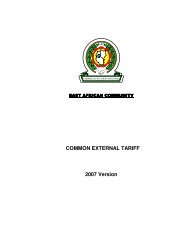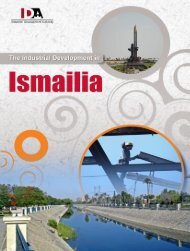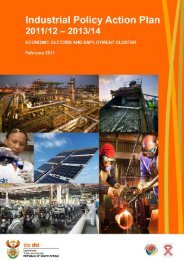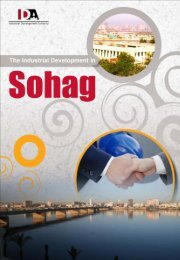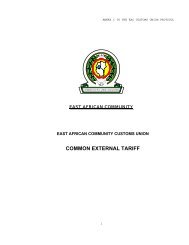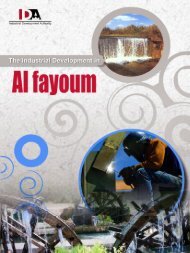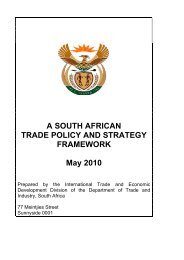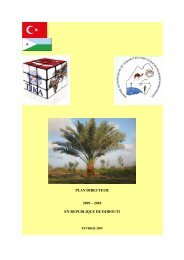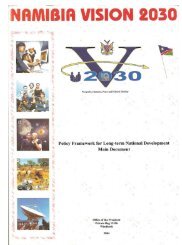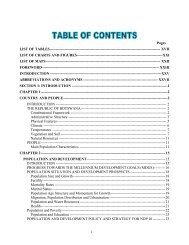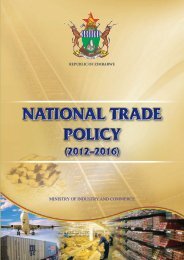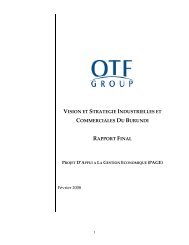rwanda national export strategy - minicom
rwanda national export strategy - minicom
rwanda national export strategy - minicom
Create successful ePaper yourself
Turn your PDF publications into a flip-book with our unique Google optimized e-Paper software.
Page 40<br />
RWANDA NATIONAL EXPORT STRATEGY<br />
sector as a serious economic enterprise will help to developing the necessary interventions—from modern<br />
design to branding—that are necessary for the sector to flourish.<br />
Issue #4 Export platforms need to compete in niche markets. A major constraint to inter<strong>national</strong><br />
access is that cooperatives rarely provide the economies of scale in transport and shipping that are<br />
necessary to be globally competitive and to attract foreign buyers. Therefore, Rwanda needs to compete<br />
in niche markets where there is a demand for unique products rather than competing in mass markets.<br />
Issue #5 Technical know-how of artisans needs improvement. Skill deficiencies result in poor<br />
design, no specialization, inconsistent product standardization and incomplete finishing, which detract<br />
from quality. Cooperatives should be encouraged to innovate and seek information on the inter<strong>national</strong><br />
market in order to reduce these deficiencies. Given that there is a rising, albeit, small number, of skilled<br />
craftsman in Rwanda, knowledge sharing as well as targeted training needs to be encouraged.<br />
Issue #6 Branding, marketing, presentation and packaging need support. Inadequate attention is<br />
paid to appropriate packaging, to the detriment of product preservation, durability and quality.<br />
Issue #7 Need to develop <strong>export</strong>-financing mechanisms customized for the handicraft sector.<br />
Unavailability of flexible credit for this sector hinders <strong>export</strong>s, as small cooperatives are unable to carry<br />
the burden of all the upfront costs of <strong>export</strong>ing. Finance solutions, as well as developing relationships<br />
with buyers willing to share in the cost of <strong>export</strong>ing will enable the handicraft sector to <strong>export</strong>.<br />
Issue # 8 Targeted initiatives are required to develop nascent industries. Newer industries, such as<br />
leather and silk, have a potential to contribute to the home décor and fashion sector. However, these<br />
nascent industries need targeted initiatives to develop the local skills base. This is especially true of silk,<br />
where there is no real local knowledge base, although it also applies to leather products, where training<br />
and value addition will be necessary to become inter<strong>national</strong>ly competitive.<br />
4.3.8 OTHER POTENTIAL HIGH GROWTH SECTORS<br />
In addition to traditional sectors, there are nascent sectors, such as biotech and cloud computing, which<br />
show opportunity for growth and diversification for the Rwandan economy. In addition, these sectors<br />
have been identified in other Government of Rwanda documents, such as the Rwanda Industrial Policy<br />
and Master Plan as sectors of potential long-term growth and development. While a number of activities<br />
towards developing these sectors have been identified and included in the Implementation plan, a more<br />
elaborate discussion on these Greenfield sectors are in Concept Notes within the Department of Trade and<br />
Manufacturing at the RDB.<br />
<br />
<br />
Pyrethrum - Rwanda is <strong>export</strong>ing pyrethrum pale extracts and is looking at processing and<br />
<strong>export</strong>ing biological insecticides. Export revenues reached US$1.6 million in 2010 with total<br />
production at 6,500MT of pale extract (from 378,000MT of dry flowers). This compares to<br />
US$1.0 million of <strong>export</strong>s and 4,010MT of pale extract production in 2009. Rwanda holds 5<br />
percent of world production currently. SOPYRWA, the sole Rwandan <strong>export</strong>er projects <strong>export</strong><br />
revenues of US$ 3.7 million by 2011 and US$10.5 million by 2015. Bio-pesticide from Rwanda,<br />
which potentially poses a reduced risk to the environment and to human health vs. traditional<br />
pesticides, is an attractive alternative to synthetic pesticides and Sopyrwa is positioning itself to<br />
take advantage of this opportunity. On the production side, productive conditions for growing<br />
chrysanthemum flowers – the source of pyrethrum – are beneficial in Rwanda: ideal tropical<br />
highland growing conditions, labour abundance, and the prevalence of smallholder cultivation.<br />
Biotech – Broadly within agriculture and health. Biotechnology has been identified as a largely<br />
untapped and transformative engine of economic growth for Africa. Rwanda has potential in this<br />
field. First, Rwanda provides an environment for infectious disease, genome and other research,<br />
due to its geographic positioning, as well as due to the unique polyzygotic DNA makeup of its<br />
population, which is the subject of NIH scientific research in the region. Further, indigenous<br />
crops such as maize, cassava, and potatoes can be used to make bio-plastics. Additionally,<br />
Rwanda can provide inexpensive semi-skilled labour for drug production and regional



